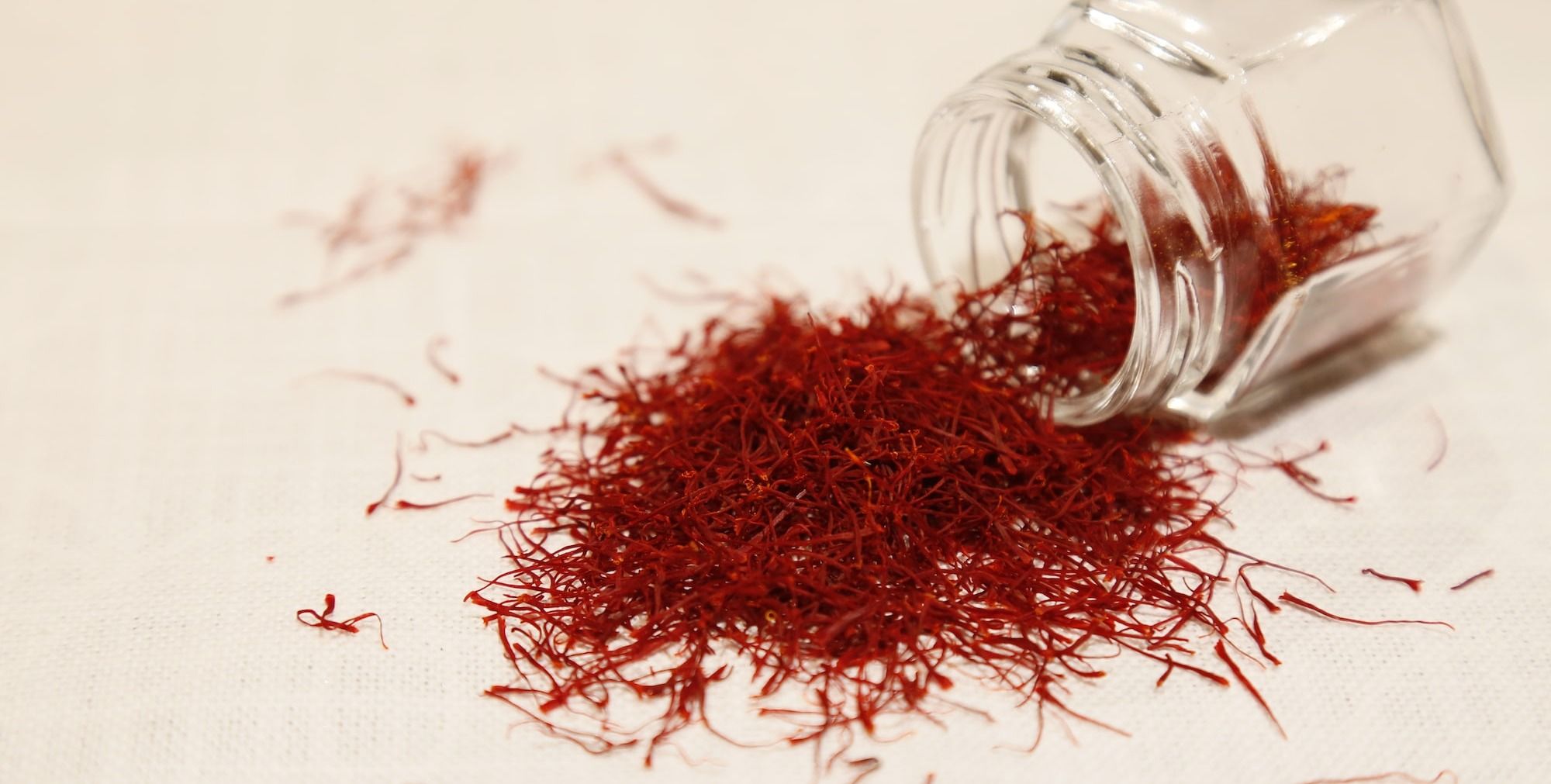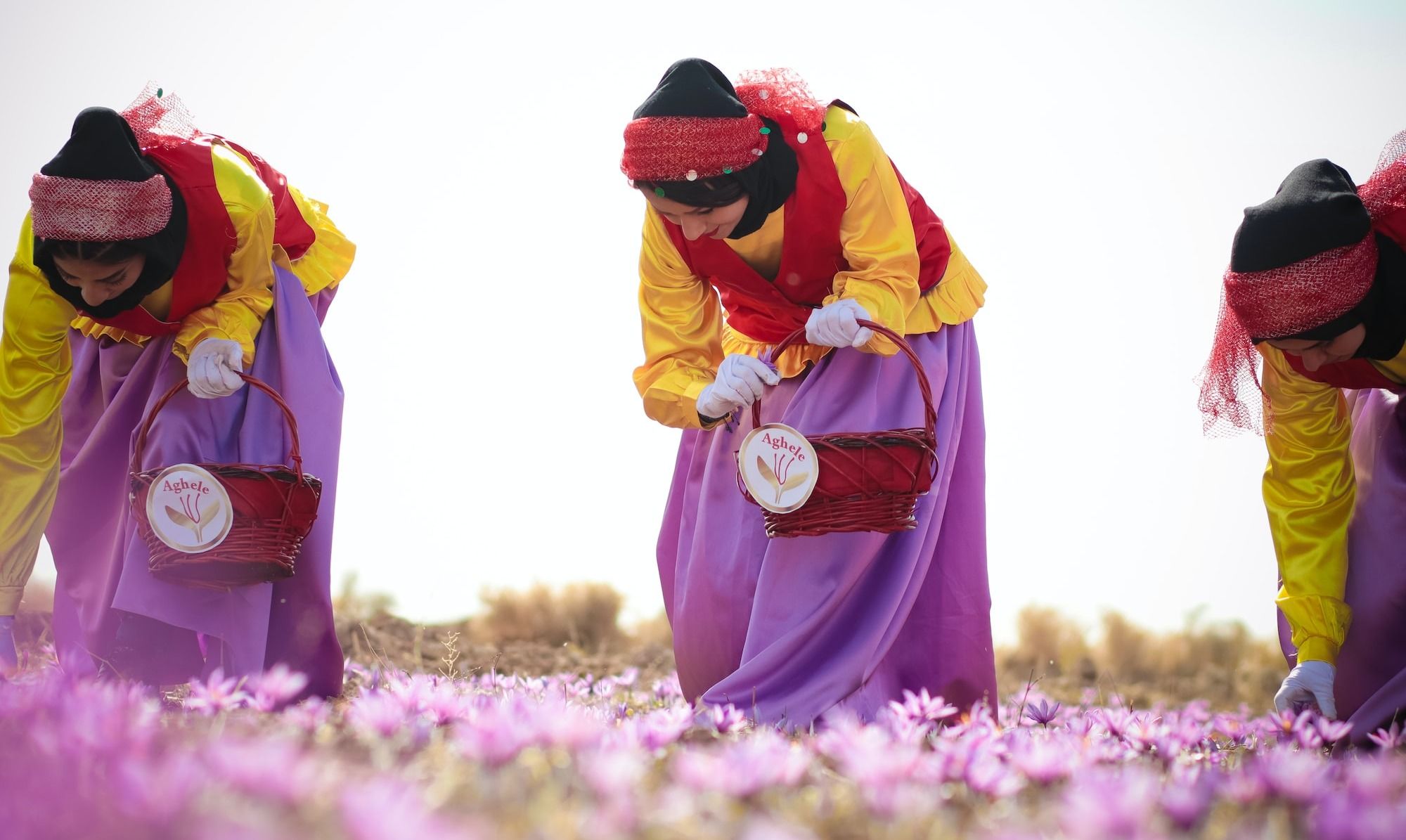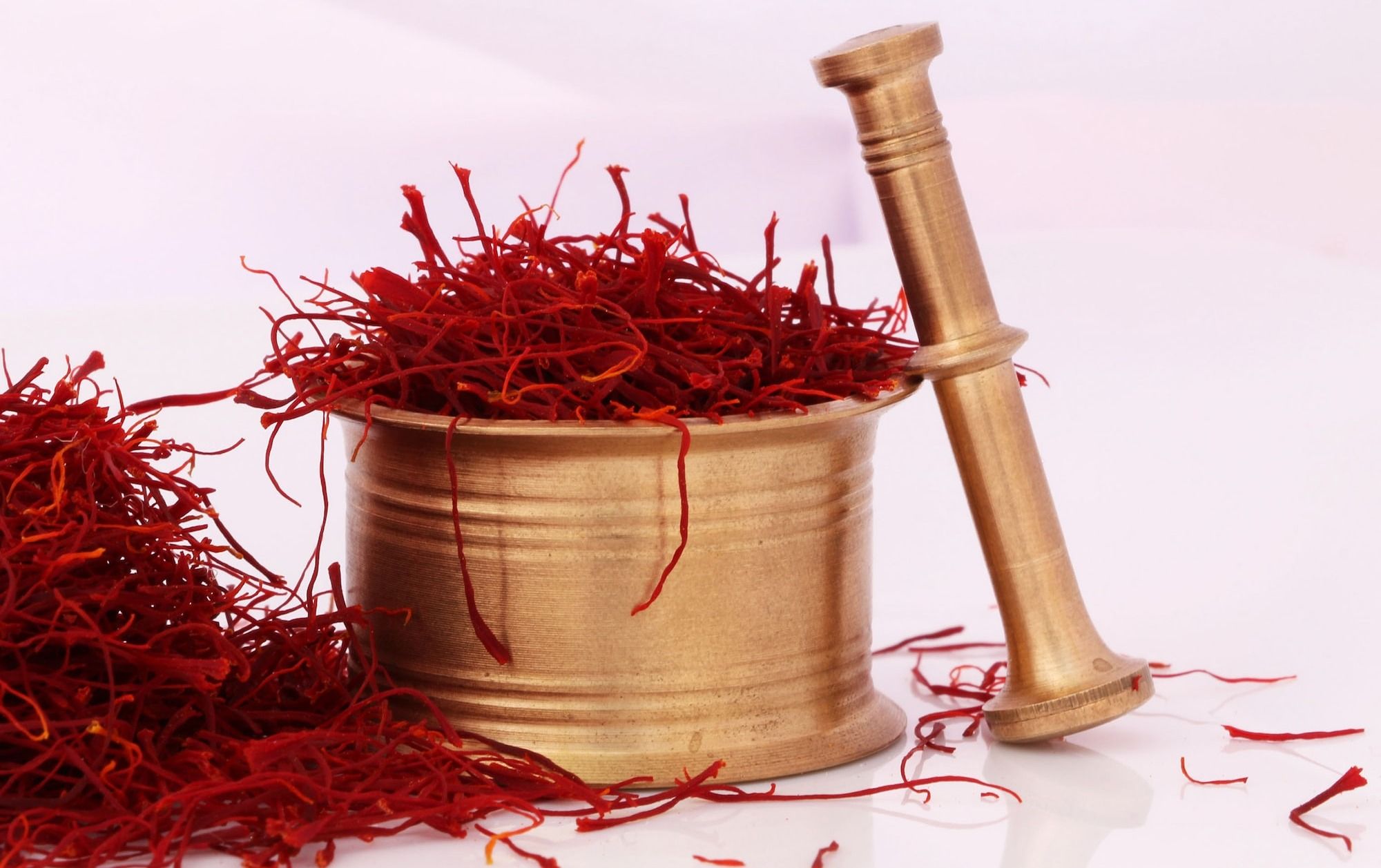Discover Some of The World's Most Expensive Saffrons
Why Saffron is Treasured: A Guide to Identifying its Top-Quality Varieties

What Is Saffron?
Saffron, sourced from the Crocus sativus flower, holds the title as one of the globe's priciest spices when measured by weight. Saffron is so expensive to its labor-intensive harvesting process, where only three threads can be obtained from each flower.
While the notion of the "finest" saffron might vary based on individual tastes, specific varieties have gained international acclaim due to their distinct flavor, color, and aroma. These variations arise from differences in regional soil types, climatic conditions, and unique farming techniques.
What Does Saffron Taste and Smells Like?
Saffron boasts a distinctive flavor and aroma that can be challenging to articulate. It carries nuances of honey, sweetness, floral undertones, and an earthy depth, yet all these remain delicate.
The essence of saffron in a dish can be likened to the subtle scent of a flower in the breeze. It offers an elusive taste, making it somewhat tricky for the palate to capture entirely.
Although many use saffron to bestow its characteristic hue to recipes, the true essence lies in its enchanting aroma and nuanced taste.

Why Is Saffron So Expensive?
Saffron is often dubbed the world's priciest spice due to the intricacy of its production:
Limited Yield: Each flower provides only three saffron threads and blooms just once annually.
Labor-Intensive Harvest: The threads must be hand-picked during a specific time, ensuring the flowers are closed to protect the fragile stigmas.

Vast Quantities Needed: About 1,000 flowers yield a mere ounce of saffron.
Quality Signs: True saffron has a sweet hay-like aroma with predominantly red threads, devoid of yellow stamens.
These factors combined make saffron a luxury, often costing around $10 to $13 per gram.
Let's Discover The World's Premium Saffron Varieties

1. Kashmiri Saffron (India)
Kashmiri saffron stands out globally, often touted as the finest quality. This saffron, cultivated in India's Kashmir Valley, is recognized for its unique deep red hue and a flavor profile that leans towards the sweet and floral side. To create this revered spice, the stigma of the Kashmiri saffron flower undergoes a drying process.
More than just a culinary ingredient adding flavor and color to Indian dishes, this saffron holds significant importance in Ayurvedic practices. What sets Kashmiri saffron apart is its impressive crocin content of 8.72%, which is notably higher than the 6.82% found in its Iranian counterpart. Such a rich crocin concentration is what bestows upon Kashmiri saffron its vibrant color and intense flavor.
Top-tier Grade Quality: Mongra saffron is a deep-red Kashmiri variety, known for its nutrient-rich stigma. It's the purest and most expensive form of Kashmiri Saffron.
Unique Characteristics: Kashmiri saffron is appreciated for its deep red hue, indicating its high quality and potency. The aroma is intense, with a mix of floral, earthy, and slightly sweet notes.
2. Iranian Saffron
Often dubbed as "red gold," Iranian Saffron has long graced various dishes, beverages, and medicines with its mesmerizing flavor, enchanting aroma, and captivating hue. This timeless spice boasts a rich history and multifaceted uses.
While saffron is grown in various parts of the world, Iran stands out as its leading producer and exporter. The saffron from this region is renowned globally for its unmatched quality.
Dominating the saffron production landscape, Iran's contribution is immense, with the majority of its saffron yield originating from the northeastern Khorasan Province. This dominance in production, paired with the exceptional caliber of its saffron, solidifies Iran's reputation in the global saffron market.
Top-tier Grade Quality: Sargol is the top grade, akin to the "Mogra" of Kashmiri saffron. It consists of only the red stigma tips, resulting in a very rich and potent flavor. It's the most expensive grade.
Unique Characteristics: Iranian saffron threads are vivid crimson with a slightly orange hue. The saffron has a potent aroma and offers a rich, full-bodied flavor.
3. Spanish Saffron
Originating from Spain's La Mancha region, Azafrán de la Mancha saffron is a premium variety that undergoes meticulous hand-picking and drying processes, ensuring a top-tier product.
What sets Azafrán de la Mancha apart are its notably vibrant flavor and aroma. Furthermore, its saffron threads are lengthier than many other types, enhancing its ease of use.
Given these exceptional characteristics, it's no wonder that both professional chefs and culinary enthusiasts prefer Azafrán de la Mancha. Whether it's employed as a seasoning for dishes or savored for its distinct taste, this saffron variety promises to captivate one's palate.
Top-tier Grade Quality: Coupe is the top grade of Spanish saffron. It has the highest concentration of crocin, making it intensely colored and flavorful. Comparable to the Sargol or Super Negin of other regions.
Unique Characteristics: Spanish saffron boasts a vivid red color, and the aroma is slightly less intense than its Kashmiri and Iranian counterparts. It's commonly used in Spanish dishes like paella.
4. Afghan Saffron
In recent years, Afghanistan has been recognized for its high-quality saffron. Afghan saffron has garnered significant attention and acclaim in recent years for repeatedly ranked among the best in the world by various international competitions and organizations. Its high quality is attributed to the crocin levels (responsible for the saffron's intense color) and the safranal content (responsible for the aroma).
Afghan saffron is known for its unique taste and aroma, which can be slightly different from its counterparts due to the region's specific soil and climate conditions.
Top-tier Grade Quality: Super Negin represents the top-tier Afghan saffron. It's characterized by longer threads with a deep red color, similar in quality to the Sargol grade of Iran.
Unique Characteristics: It possesses a bright red hue and a distinct aroma, similar to the saffron from Kashmir. The flavor is robust, and the saffron threads are long and pure.
5. Moroccan Saffron
Morocco's Taliouine region boasts an ideal climate for cultivating the Crocus sativus flower, leading many connoisseurs to rate Taliouine saffron among the world's finest. A standout feature of this saffron is its abundant safranal content, which not only gives it a uniquely spicy and robust aroma but also contributes to its array of health advantages.
Moreover, when it comes to Crocin concentration — the compound responsible for the saffron's vibrant golden hue — Taliouine saffron outshines its counterparts. This rich coloration is especially sought after in dishes like paella and risotto, where visual appeal complements flavor depth. For those on the hunt for top-tier saffron, Taliouine Saffron undoubtedly ranks high on the list.
Top-tier Grade Quality: Taliouine, named after the Taliouine region, which is the heartland of saffron cultivation in Morocco. This grade is top-tier, having a strong flavor and deep red hue.
Unique Characteristics: Moroccan saffron has a deep red hue and a fragrance that's subtly earthy with sweet notes.
6. Greek Saffron
Sourced from Greece, Kozani Saffron, often referred to as Krokos Kozanis, is distinguished by its EU PDO (Protected Designation of Origin) status. This esteemed label underscores its superior quality in both color and taste. When added to dishes, this saffron imparts a gentle aroma, a nuanced spicy note, and a radiant yellow hue.
As a saffron variant, Krokos Kozanis is celebrated not just for its rich Safranal content, placing it alongside the world's most prestigious saffrons, but also for its exclusivity.
The intricate process of cultivating this spice, combined with its scarcity, positions it among the most coveted and expensive spices globally.
Despite its high cost, gourmet enthusiasts argue that the exquisite flavor profile it offers is truly worth the investment. For those in pursuit of the finest saffron, Krokos Kozanis is an unmatched contender.
Top-tier Grade Quality: Greek Red is the top-grade saffron from Greece. It comprises only the red stigmas and is known for its potent aroma and flavor.
Unique Characteristics: Greek saffron is esteemed for its vibrant color, intense flavor, and aromatic scent. It's often recognized for its high crocin content, which gives dishes their signature golden-yellow hue.
In Conclusion
While these are the top regions for saffron production and quality, it's worth noting that the "best" saffron is also dependent on individual preferences and the specific requirements of the dish being prepared.
It's always recommended to buy saffron from reputable vendors to ensure authenticity and quality.
What forms of saffron are available for sale?
Saffron is available in two primary forms: thread and powdered. Understanding the distinctions between them is crucial, especially since saffron is often employed to enhance a dish's visual appeal.
Powdered saffron is generally less preferred as its purity can be questionable unless sourced from a trusted supplier.
If you're keen on using powdered saffron, it's advisable to grind the threads yourself. Many culinary aficionados favor saffron threads due to their more robust and authentic flavor profile.
What Are the Health Benefits of Consuming Saffron?
Saffron offers numerous health benefite, thanks to its various active compounds:
1. It contains crocin and crocetin, which are believed to have disease-preventative properties.
2. With 5-hydroxytryptophan present, it can enhance blood circulation to the brain, acting as a mood enhancer.
3. It plays a role in heart health maintenance.
4. Assists in combating anemia.
5. Provides relief for skin issues, including acne.
6. Offers potential solutions against hair loss.
7. It's traditionally used for respiratory conditions like whooping cough and asthma.
8. Provides alleviation from menstrual discomfort.
9. Offers benefits during pregnancy.
10. Acts as an aid in managing arthritis.
11. Offers potential relief from insomnia.
12. Helps guard against age-related conditions, including cataracts and macular degeneration.
13. Has properties that are believed to be anti-cancerous.
How to Tell If Saffron is Real or Fake?
Determining the authenticity of saffron can be challenging due to the presence of counterfeit versions in the market. To distinguish genuine saffron from the fakes, consider the following guidelines:
1. Cost Factor: Genuine saffron requires intensive labor to produce, which results in a high price. Generally, you might spend upwards of $10 for a single gram. If you come across a deal that's considerably cheaper, approach with skepticism.
2. Aroma: True saffron emits a distinctive fragrance that's a blend of floral notes with a hint of honey. On the other hand, counterfeit saffron might have an off-putting metallic or tobacco scent, especially as it ages, due to the adulterants.
3. Appearance: Genuine saffron strands display a deep red hue, though they might occasionally have a slight yellow tinge. Be cautious if the strands appear predominantly yellow or have white sections.
4. Water Test: To further verify authenticity, immerse a small portion of saffron in hot water. If the color of the water changes instantly or the strands lose their color rapidly, it's likely you have a counterfeit. Authentic saffron strands will retain their red hue and will gradually release their color into the water, turning it a shade of yellow over a span of three to ten minutes.
By keeping these indicators in mind, you'll be better equipped to identify genuine saffron and avoid potential counterfeits.


